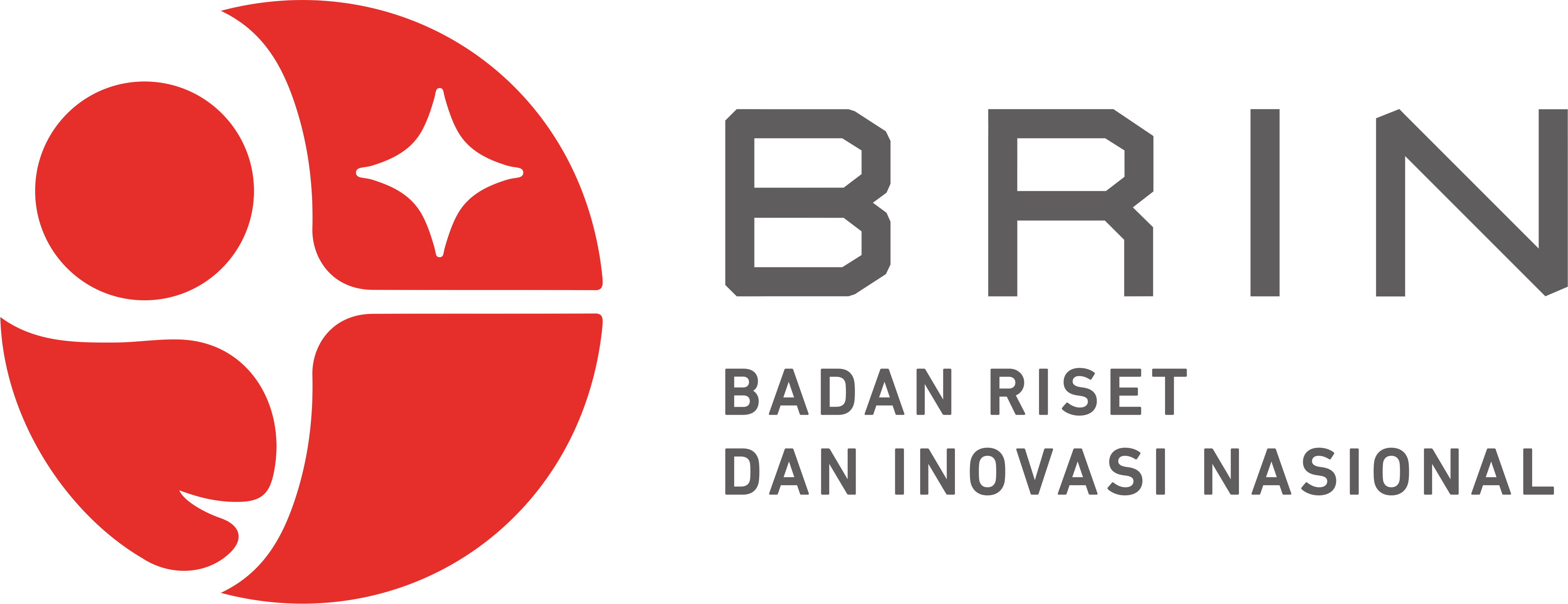SUPLEMENTASI ZAT BESI TERHADAP KADAR HEMOGLOBIN DAN DEPRESI POSTPARTUM
Abstract
Latar Belakang: Depresi postpartum (PPD) merupakan gangguan suasana hati yang dapat muncul setelah melahirkan dan berdampak negatif terhadap kesehatan ibu serta tumbuh kembang anak. Defisiensi zat besi, yang sering terjadi akibat anemia postpartum, berperan dalam mekanisme biologis PPD melalui gangguan regulasi neurotransmiter dan kadar hemoglobin. Tujuan: Menganalisis efektivitas suplementasi zat besi dalam menurunkan gejala depresi postpartum di Kabupaten Kubu Raya. Metode: Penelitian ini merupakan studi eksperimen semu dengan rancangan pre-posttest nonequivalent control group, dilaksanakan pada Juni hingga Agustus 2024 di Puskesmas Rasau Jaya dan Pal Sembilan. Sebanyak 52 ibu postpartum dipilih dengan teknik consecutive sampling dan dibagi secara merata menjadi kelompok intervensi dan kontrol. Kelompok intervensi mendapat suplementasi zat besi (Fe elemental 60 mg/hari selama 30 hari) serta edukasi gizi, sedangkan kelompok kontrol hanya menerima edukasi. Kadar hemoglobin dan gejala PPD (diukur dengan kuesioner PHQ-9) dievaluasi sebelum dan sesudah intervensi. Hasil: Suplementasi zat besi secara signifikan meningkatkan kadar hemoglobin (p=0,000) dan menurunkan skor PHQ-9 (p=0,000) pada kelompok intervensi. Terdapat korelasi signifikan antara peningkatan kadar hemoglobin dan penurunan skor depresi (p<0,001; R²=0,513). Kesimpulan: Suplementasi zat besi efektif dalam meningkatkan kadar hemoglobin dan menurunkan gejala depresi postpartum, sehingga penting untuk diterapkan dalam pelayanan kesehatan ibu masa nifas.
Full Text:
PDFReferences
Abioye, A. I., Bode-Thomas, F., & Okolo, S. (2021). Postpartum anemia and iron deficiency: A neglected maternal health issue. Maternal & Child Nutrition, 17(3), e13208. https://doi.org/10.1111/mcn.13208
Albacar, G., Sans, T., Martín-Santos, R., García-Esteve, L., Guillamat, R., Sanjuan, J., ... & Gratacós, M. (2012). Lower maternal hemoglobin levels are associated with postpartum depression. Journal of Affective Disorders, 136(3), 1031–1037. https://doi.org/10.1016/j.jad.2011.06.048
Al-Farsi, Y. M., Al-Farsi, O. Y., Al-Sharbati, M. M., & Al-Adawi, S. (2022). Prevalence and risk factors of postpartum depression in Oman: Role of anemia and iron status. BMC Public Health, 22(1), 232. https://doi.org/10.1186/s12889-022-12510-z
Alharbi, N. M., Ahmed, H. G., Alqahtani, H. A., & Alshahrani, M. S. (2024). Prevalence and associated factors of postpartum depression among women in Najran, Saudi Arabia. Healthcare, 12(10), 986. https://doi.org/10.3390/healthcare12100986
Allen, L. H. (2000). Anemia and iron deficiency: Effects on pregnancy outcome. The American Journal of Clinical Nutrition, 71(5), 1280S–1284S. https://doi.org/10.1093/ajcn/71.5.1280s
Beard, J. L., & Connor, J. R. (2003). Iron status and neural functioning. Annual Review of Nutrition, 23, 41–58. https://doi.org/10.1146/annurev.nutr.23.011702.073139
Beard, J. L., Hendricks, M. K., Perez, E. M., & Tomlinson, M. (2016). Iron deficiency and depression in mothers and children: A brief review of the literature. The Journal of Nutrition, 146(Supplement_1), 1612S–1617S. https://doi.org/10.3945/jn.115.223628
Beard, J. L., Wiesinger, J. A., & Connor, J. R. (2021). Pre- and postnatal iron deficiency alters myelination in rat pups. NeuroToxicology, 87, 174–182. https://doi.org/10.1016/j.neuro.2021.07.004
Becker, M., Weinberger, T., Chandy, A., & Schmukler, S. (2021). Depression during pregnancy and postpartum. Current Psychiatry Reports, 23(11), 81. https://doi.org/10.1007/s11920-021-01310-1
Corwin, E. J., Murray-Kolb, L. E., Beard, J. L., & Braselton, M. P. (2021). Anemia in postpartum women: Prevalence and association with depressive symptoms. The American Journal of Maternal/Child Nursing, 46(2), 92–98. https://doi.org/10.1097/NMC.0000000000000690
Ghaedrahmati, M., Kazemi, A., Kheirabadi, G., Ebrahimi, A., & Bahrami, M. (2017). Postpartum depression risk factors: A narrative review. Journal of Education and Health Promotion, 6, 60. https://doi.org/10.4103/jehp.jehp_9_16
Halbreich, U., & Karkun, S. (2006). Cross-cultural and social diversity of prevalence of postpartum depression and depressive symptoms. Journal of Affective Disorders, 91(2–3), 97–111. https://doi.org/10.1016/j.jad.2005.12.051
Jung, H. E., Lee, H. J., Kang, S. Y., & Kim, G. (2019). Association of anemia with postpartum depression: A systematic review and meta-analysis. Journal of Affective Disorders, 245, 408–415. https://doi.org/10.1016/j.jad.2018.11.014
Kementerian Kesehatan Republik Indonesia. (2023). Profil Kesehatan Indonesia 2023. Jakarta: Kemenkes RI.
Kementerian Kesehatan Republik Indonesia. (2023). Survei Kesehatan Indonesia 2023: Laporan Nasional. Jakarta: Badan Kebijakan Pembangunan Kesehatan.
Khodabakhshi-Koolaee, A., Forouhari, S., Gholami, M., & Seyyedmoharrami, S. M. (2019). Social determinants and postpartum depression: A narrative review. International Journal of Health Studies, 5(4), 1–4. https://doi.org/10.22100/ijhs.v5i4.699
Kusumawardani, N. (2020). Prevalensi dan determinan depresi postpartum di Indonesia: Analisis data SDKI 2017. Jurnal Kesehatan Reproduksi, 11(1), 1–8. https://doi.org/10.22435/kespro.v11i1.2512
Lachowicz, M., Moustafa, A. A., & Abdel-Hamid, R. (2021). Iron supplementation improves maternal psychological functioning during postpartum. Nutrients, 13(3), 842. https://doi.org/10.3390/nu13030842
Larsen, M. A., Nielsen, B., & Hansen, T. G. (2022). Changes in hemoglobin are associated with depression scores in the postpartum period. European Journal of Obstetrics & Gynecology and Reproductive Biology, 276, 120–126. https://doi.org/10.1016/j.ejogrb.2022.06.011
Lee, A. M., Lam, S. K., Sze Mun Lau, S. M., Chong, C. S. Y., Chui, H. W., & Fong, D. Y. T. (2020). Prevalence, course, and risk factors for antenatal anxiety and depression. Obstetrics and Gynecology, 115(3), 503–510. https://doi.org/10.1097/AOG.0b013e3181d2f0b1
Lin, C. J., Lai, Y. M., Wang, P. W., Ko, C. H., & Yen, C. F. (2022). The impact of pregnancy intention on maternal psychological well-being and mother–infant bonding: A prospective study. Journal of Affective Disorders, 309, 19–25. https://doi.org/10.1016/j.jad.2022.03.052
Nair, M., Choudhury, M. K., Choudhury, S. S., Kakoty, S. D., Sarma, U. C., Webster, P., & Knight, M. (2021). Association between maternal anemia and postpartum depression: A cohort study from India. BMJ Open, 11(5), e042503. https://doi.org/10.1136/bmjopen-2020-042503
Peet, E. D., Becker, A. E., & Simon, G. E. (2022). Low ferritin levels and risk of postpartum depression: Evidence from population-based studies. Maternal and Child Health Journal, 26(3), 417–425. https://doi.org/10.1007/s10995-021-03170-9
Peña-Rosas, J. P., De-Regil, L. M., Garcia-Casal, M. N., & Dowswell, T. (2015). Daily oral iron supplementation during pregnancy. Cochrane Database of Systematic Reviews, 2015(7), CD004736. https://doi.org/10.1002/14651858.CD004736.pub5
Rahman, A., Haq, Z., Ahmed, I., Hafeez, A., & Zafar, S. (2021). Effectiveness of iron therapy on postpartum depression: A randomized controlled trial in Pakistan. BMC Pregnancy and Childbirth, 21(1), 734. https://doi.org/10.1186/s12884-021-04173-2
Rahman, M. M., Abe, S. K., Kanda, M., Narita, S., Rahman, M. S., Bilano, V., ... & Shibuya, K. (2023). Maternal anemia and risk of postpartum depression: A systematic review and meta-analysis. PLOS ONE, 18(2), e0281053. https://doi.org/10.1371/journal.pone.0281053
Sidebottom, A. C., Harrison, P. A., Godecker, A., & Kim, H. (2012). Validation of the Patient Health Questionnaire (PHQ)-9 for prenatal depression screening. Archives of Women's Mental Health, 15(5), 367–374. https://doi.org/10.1007/s00737-012-0295-x
Sultan, P., Bryant, A., Cope, A., & Harney, A. (2023). Oral iron therapy for postpartum anemia: A systematic review and meta-analysis. American Journal of Obstetrics and Gynecology, 229(1), 91.e1–91.e15. https://doi.org/10.1016/j.ajog.2023.03.005
Vijayakumar, L., John, S., & Ponnudurai, R. (2022). Postpartum anemia and depression: A cohort study from a developing country. Asian Journal of Psychiatry, 67, 102941. https://doi.org/10.1016/j.ajp.2021.102941
Wassef, A., Nguyen, Q. A., St-André, M., & Zelkowitz, P. (2020). Iron status and risk of postpartum depression: A systematic review and meta-analysis. Archives of Women's Mental Health, 23(5), 597–611. https://doi.org/10.1007/s00737-019-00989-z
Widyawati, F., Yamin, S., & Riyanti, E. (2021). Validasi Patient Health Questionnaire-9 (PHQ-9) versi Bahasa Indonesia sebagai alat skrining gejala depresi postpartum. Jurnal Kesehatan Reproduksi, 12(2), 123–132. https://doi.org/10.22435/kespro.v12i2.3889
World Health Organization (WHO). (2022). WHO recommendations on maternal and newborn care for a positive postnatal experience. Geneva: WHO. Retrieved from https://www.who.int/publications/i/item/9789240045989
Wu, H., Li, H., Zhu, Y., & Wang, Y. (2022). Iron deficiency and postpartum depression: A review of the current evidence. BMC Women's Health, 22(1), 112. https://doi.org/10.1186/s12905-022-01694-5
Xu, H., Li, L., Wang, Y., & Zhao, S. (2023). Iron supplementation reduces postpartum depression symptoms: A meta-analysis. Frontiers in Psychiatry, 14, 1078116. https://doi.org/10.3389/fpsyt.2023.1078116
Yawn, B. P., Dietrich, A. J., Wollan, P., Bertram, S., Graham, D., Huff, J., ... & Pace, W. D. (2009). PHQ-9: Utility of a self-administered depression scale in detecting major depression in the postpartum period. Journal of the American Board of Family Medicine, 22(5), 483–491. https://doi.org/10.3122/jabfm.2009.05.080145
DOI: https://doi.org/10.30602/jkk.v11i2.1892
Article Metrics
Refbacks
- There are currently no refbacks.

This work is licensed under a Creative Commons Attribution-ShareAlike 4.0 International License.

_.jpg)












